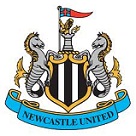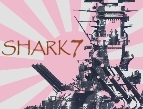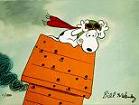Nikademus
Posts: 25684
Joined: 5/27/2000
From: Alien spacecraft
Status: offline

|
quote:
ORIGINAL: Wirraway_Ace
quote:
ORIGINAL: JeffK
quote:
ORIGINAL: Nikademus
quote:
ORIGINAL: JeffK
No, apart from comments about "8 Mohawks being the airdefence of NE India" somewhere I doubt there were many more available.
Joe Baugher's site is http://www.joebaugher.com/usaf_fighters/p36.html
Your "almost 100" seems high, the RAF only equipped 2 sqns.
Mohawk/Hawk75 action was limited in Burma. This limited exposure combined with some favorable combat situations actually gave the Mohawk a better record vs the Ki-43II's as opposed to the Hurricanes which saw wide spread use and overall got a drubbing from the Oscars. The Mohawk was a competetive plane in comparison to it's peers which included early varients of the 109, which under French service fought to a very competetive and typical kill ratio in 1939-40. Specific numbers available if interested. Game wise.....AE has improved the situation with lighter armed planes like the Ki-43 making them more competetive vs. useless as was the case in WitP stock.
Only limited IRL in that it only equipped 2 squadrons. It was used as an escort, point defense and in ground attack. Cant think of other roles to perform.
Its oppositon was the Hayabusa or Ki27.
As with the Hurris "getting a drubbing" a lot had to do with the relative experience levels (or the claims of ceratin units & pilots), which soon leveled out.
My memory from tallyng the losses documented in Shore's 3 volumes was that Oscars achieved a 3:1 kill ratio against the various models of the Hurri in Malaya, Java and Burma. Certainly pilot experience and the initial numbers advantages were key factors, but Shore's interviews suggest the Hurri was not well thought of by the pilots who flew it against Zeros and Oscars. The pilots often mistook Ki43s for A6Ms, but at least one remarked that while the "Zero" could out climb and out turn the Buffalo, the Buffalo could at least out dive them, while the Hurricane could not out turn, out climb nor out dive the enemy.
Hi,
My tally of Shores vol III yielded a 5.2:1 ratio of Ki-43II vs Hurricane in favor of the Ki-43, a signifigant skew from more normal exchanges. The ratio of Mohawk to Ki-43 was a more conventional 1.5:1 in favor of the Ki-43.
Jeff- When i said "Limited" my context was that in comparison to the sortie rates, breadth of deployment and time factor, there were far more Hurricane ops vs. Mohawk and of the limited number of dogfights that occured several of them presented favorable conditions to the Mohawk pilots. This was an important distinction that I made on another board when it was "suggested" that based on "the ratios" that the Mohawk was in fact superior to the Hurricane even though the RAF felt the opposite. My personal opinion was that the data from Burma re: Mohawk was far too limited in scope in comparison to the Hurricane data to support such a conclusion of superiority.
A similar argument gets more play (and support) when looking at the Sitzkrieg period in France. Looking at the ratios alone, the Hurr suffered a 2:1 ratio vs the 109E in favor of the 109, but the French piloted Hawk75A (Mohawk in RAF service) performed better, getting a reverse score, 2:1 in favor of the H-75 against mainly 109D's along with the early E's. Shores noted that he H75 was superior to the D, but not the E but early 109E's had lighter armaments which hurt them early on. Later 109 varients lengthened the gap. Myself, again i noted that the French air force got the bulk of the engagements during this period and when the RAF finally engaged they were dogged by several bad situations which aided the German score. Overall, from a tech aspect there was not alot to choose from the 3 advesaries.
On why the Hurr suffered so badly in Burma, as always lots of factors. Japanese pilot experience was one of them, as was the fact that they faced the definitive Ki-43 varient in the improved and refined Ki-43-II. Lack of pilot exp was a factor on the RAF side but not enough to explain solely the disprecency. I agree with Wing Commander Paul Richy's accessment when he went to Burma as a "troubleshooter" He noted that the Hurricane had similar tools and capabiities to other 1st gen Allied planes that could be competetive against the Japanese and that in his vew the main reason was tactics used by the RAF there. Unfortunatley being an outsider and critical in his report, the local RAF commanders pushed back.....and the Hurr continued to suffer. Even after Spitfires deployed in numbers though, despite their "technical" superiority (particularily the Mark VIII) the crack Sentais in Burma were briefly able to hold their own but could no longer gain full air superiority.....but neither could the RAF....so a stalemate ensued. Then the numbers began to go against the JAAF.
_____________________________
|
 Printable Version
Printable Version




















 New Messages
New Messages No New Messages
No New Messages Hot Topic w/ New Messages
Hot Topic w/ New Messages Hot Topic w/o New Messages
Hot Topic w/o New Messages Locked w/ New Messages
Locked w/ New Messages Locked w/o New Messages
Locked w/o New Messages Post New Thread
Post New Thread